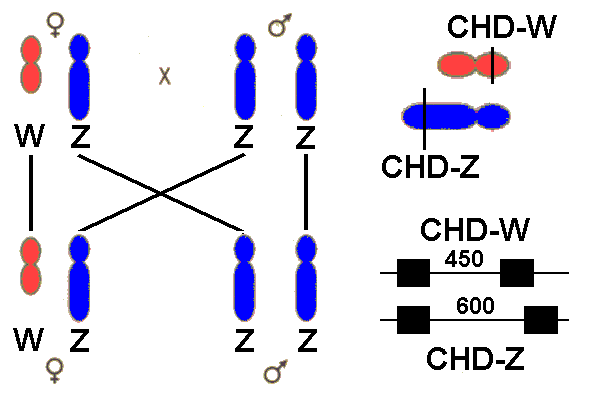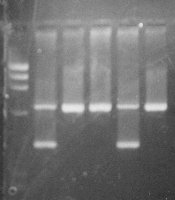

The gender of
mammals and birds is determined chromosomally. However,
whereas male mammals are XY (heterogametic) and females XX (homogametic), in birds it
is the females that are heterogametic
(WZ) and males
are homogametic (ZZ) [left]. As in
mammals, this makes a convenient test for gender
possible. In many species of seabirds, the sexes are not
strongly differentiated morphologically. Characterization of
the sex-chromosome-specific gene locus CHD (chromo - helicase - DNA
binding protein) makes a definitive gender-identification test
possible (Fridolfsoon & Ellegren 1999. J Avian Biol 30,116). CHD
is present as a pair of duplicated gene loci on the W and Z chromosomes (CHD-W and
CHD-Z, respectively) [middle]. CHD-W and CHD-Z have
conserved exons (black boxes), but differ in their intron
lengths (450 vs 600
bp, respectively). A WZ female is therefore expected to have
introns of two different
sizes, whereas a ZZ male will have only one size class.